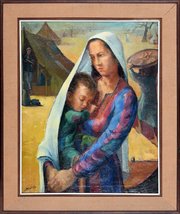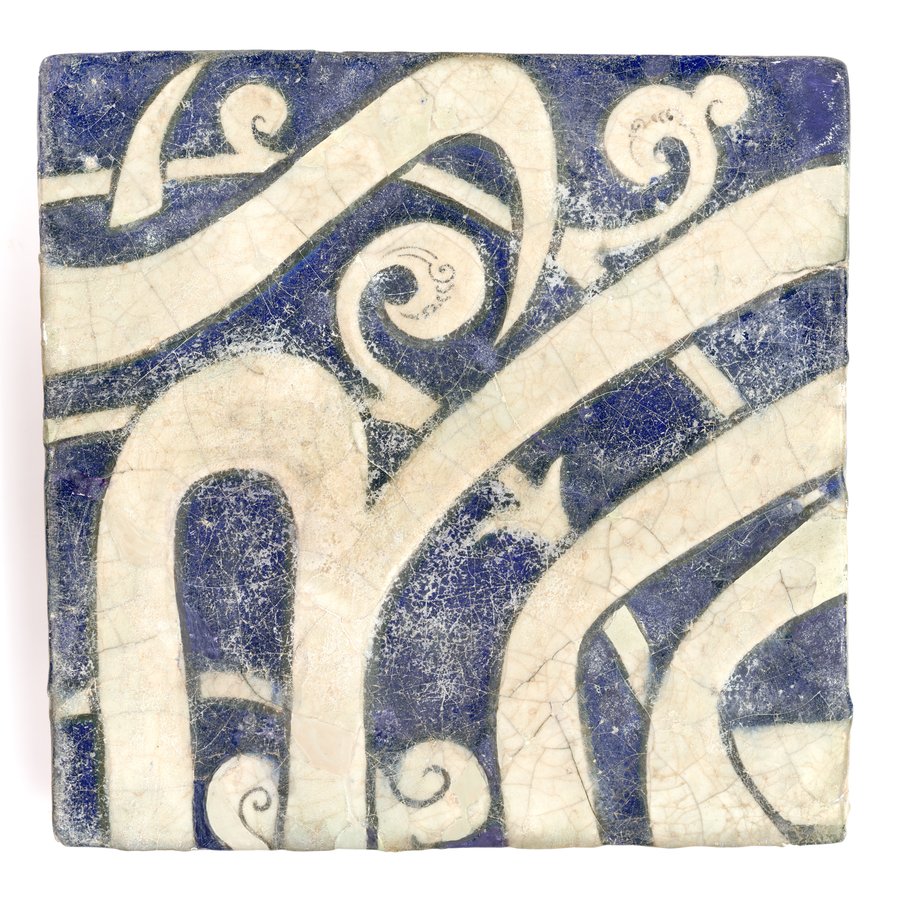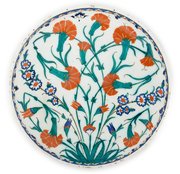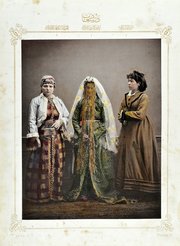
Mould-made calligraphic tile
Museum of Islamic Art
- Title:
- Mould-made calligraphic tile
- Production place:
- Kashan
- Date:
- 1300 - 1325
- Period:
- Ilkhanid
- Title:
- Mould-made calligraphic tile
- Production place:
- Kashan
- Date:
- 1300 - 1325
- Period:
- Ilkhanid
- Material:
- Fritware, Pigment, Glaze
- Technique:
- Moulding, Underglaze painting, Glazing
- Dimensions:
- 35.5 × 35.2 × 4.5 cm
The city of Kashan became not only a leading centre for the production and export of ceramic vessels in shining lusterware under Seljuq and Ilkhanid domination. The furnaces of the city also produced large quantities of glazed tiles in a variety of techniques and displaying a large range of decorative motifs and designs destined to decorate interiors and external walls of both secular palaces and religious buildings. The advent of the Seljuq Sultans and, later, of the Mongol Ilkhans in Iran and their intense building patronage filled Kashan workshops with commissions as tilework decoration became more consistently adopted on architecture. This tile presents a mould-made calligraphic decoration in white with black outlines against a cobalt-blue background with a motif of white spiralling tendrils and leaf-motifs, a common feature of calligraphic decoration across Iran, Central Asia, up to Central Anatolia from the Seljuq period onwards. Due to its considerable size, this tile must once have been part of a monumental tilework inscription adorning the walls of some important building.
From the 19th century CE onwards, numerous examples of tilework from Kashan found its way in various museum collections worldwide.



